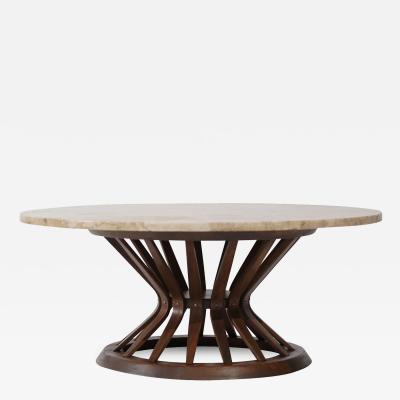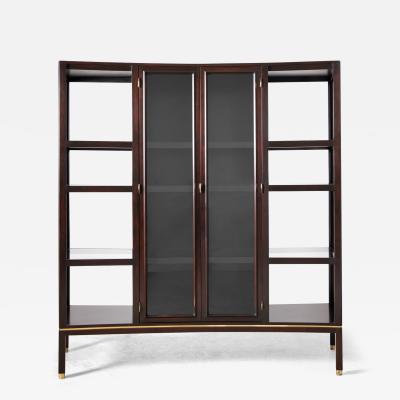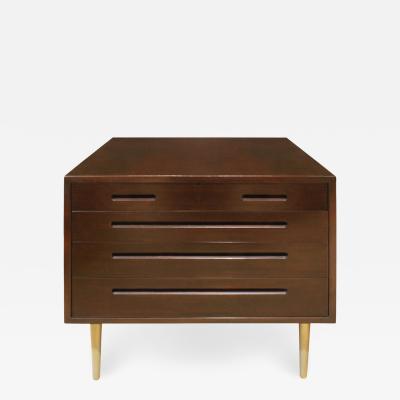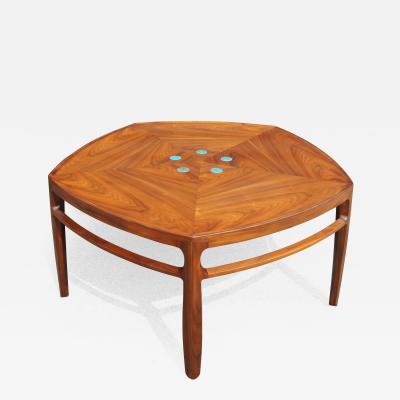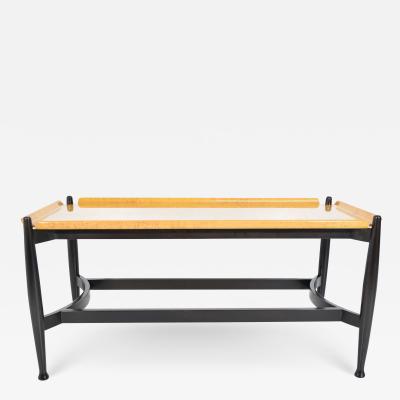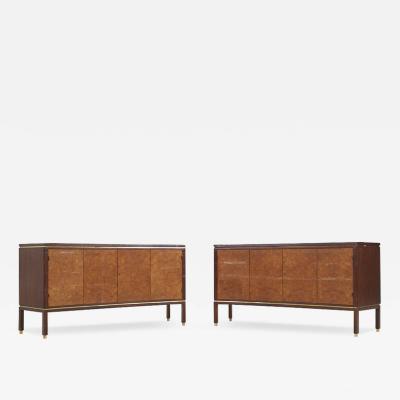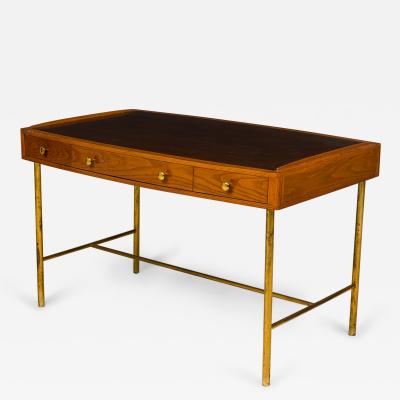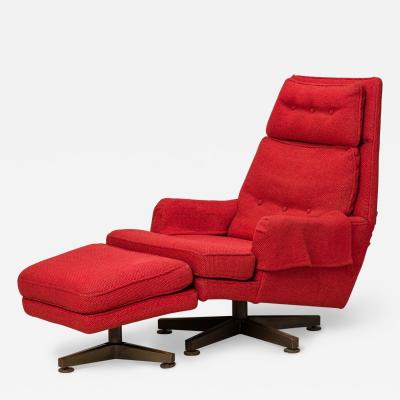Edward Wormley
Born outside of Chicago in 1907, Edward Wormley spent a couple of years studying at the School of the Art Institute of Chicago before a lack of funds forced him to abandon his collegiate career. In 1928, he took a job in the interior design studio at the Marshall Field & Company department store. Wormley’s design sensibility was largely shaped by his life experiences, including his modest upbringing as well as his frequent travels. But it was a 1930 trip to Paris, where he met the pioneering modernist architect Le Corbusier and the Art Deco furniture designer Emile-Jacques Ruhlmann, that was to be one of the most profound. When he returned to the States, bursting with inspiration, Wormley began creating pieces with clean silhouettes and unadorned surfaces. In 1931, at the age of 23, he was recruited by the Indiana based Dunbar Furniture Corporation—a collaboration that spanned over three decades and would ultimately make Edward Wormley furniture a household name.
Wormley quickly became the company’s Director of Design and produced his first Dunbar chairs, reproductions of antique designs, in 1932. When demand for the chairs increased, he added new pieces to form a full line of furniture. Dunbar never automated their production process, choosing instead to craft each piece by hand. Ultimately, Wormley was tasked with creating two lines of furniture—one traditional and one modern—for Dunbar each year. By 1944, the unparalleled popularity of Wormley’s modern line led Dunbar to drop the traditional series.
In 1945, Wormley established an independent design studio in New York, but stayed on as a consultant to Dunbar. After creating the “Precedent” collection for Dunbar’s rival, Drexel Furniture Company, in 1947, Wormley maintained a low profile and worked quietly designing showrooms, textiles, and smaller objects. In 1957, Wormley renewed his commitment to Dunbar and launched the Janus Collection. Inspired by the Arts and Crafts period, including the seminal California architects Greene and Greene, the series was an enormous success. Blurring the line between traditional and modern aesthetics, Wormley incorporated tiles from Tiffany Studios and contemporary ceramic into pieces from the Janus line. Wormley was a pioneering collector of Art Nouveau design and one of the first to focus on Tiffany lamps, glass, and vases.
Many of Wormley’s pieces remained in Dunbar’s collection for years, including the Long John coffee table, the Listen to Me chaise, and the Téte-â-Téte sofa. His works were included in a number of the Good Design shows organized by the Museum of Modern Art in New York in the early 1950s. The event was established to commend selected home furnishings for their “excellent appearance and progressive performance” and over a three year period, thirty of Wormley’s creations for Dunbar earned Good Design designations. In 1961, Wormley was featured in an article in Playboy magazine highlighting the giants of Modernism. The article was accompanied by a now-iconic image of such design pioneers as Harry Bertoia, Eero Saarinen, and Charles Eames, each sitting in a chair of their own creation. Wormley reclined in an elegant cane back chair.
Edward Wormley furniture designs have been featured in exhibitions at a swathe of fine arts institutions, including the Baltimore Museum of Art (1951), the Nelson-Atkins Museum of Art (1956), the Brooklyn Museum (1958), the San Francisco Museum of Art (1960), and the Philadelphia Museum of Art (1983). He received numerous awards for his work, including the Elsie de Wolfe award from the American Institute of Decorators (1962), the Total Design and Designer of Distinction awards from the American Society of Interior Designers (1978 and 1982, respectively), and the Distinguished Designer award from the American Society of Furniture Designers (1986). Today, examples of Wormley’s furniture reside in the collections of such institutions as the Museum of Fine Arts in Boston and the Museum of Decorative Arts in Montreal. Wormley passed away in 1995 at the age of 87.
